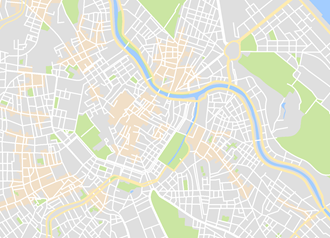Sergiev Posad is located in the Moscow region, 72 km away from Moscow. The district has more than 250 monuments, including more than 50 active churches.
Its history goes back to the Trinity Monastery, founded by Sergius of Radonezh. In the late 14th century, the first settlements appeared around the monastery. In the early 18th century, they merged into a commercial and industrial village (a posad), and on March 22, 1782 Catherine II named it after its founder.
In 1919 Sergiev Posad was granted city status. From 1930 to 1991, it was called Zagorsk in honor of the revolutionary leader V.M. Lubotsky (Zagorski), and since 1991, it became known as Sergiev Possd. The Trinity Monastery had many lands, which contributed to the development of trade and crafts.Here were manufactured crosses, candlesticks, icons, but the most popular was the Sergius toy. Even St. Sergius himself made toys to amuse kids. It was here that he blessed Dmitry Donskoy for the Battle of Kulikovo, and Andrei Rublev created a world-famous icon of the "Trinity." In 1422, St. Sergius of Radonezh passed away and was canonized. The white stone Trinity Cathedral was constructed on his coffin.
During the reign of Ivan the Terrible, the monastery was turned into a strong fortress that withstood the 16-month siege of the Polish-Lithuanian invaders. In 1689, during the Archers' Riot in Moscow, Tsar Peter hid behind the walls of the monastery. In 1744 Empress Elizabeth conferred the honorary title of Lavra monastery, which meant a superior role of the monastery over other ecclesiastical bodies. At this time the monastery possessed 214,000 acres and over 106 thousand serfs in 15 provinces and 45 cities. From 1919 to 1946, the Trinity Monastery was closed. In 1933, the ensemble of the Trinity Sergius Lavra was included in the UNESCO World Heritage List. The monastery houses the Moscow Theological Academy and Seminary. The monastery facilities are an open-air museum.
Today the Lavra is an active monastery, the spiritual center of Orthodox Russia. The monastery complex includes 45 buildings and monuments. The main gate of the monastery - is the Sacred Gate with the Church of John the Baptist. Behind it there is the biggest building - the main cathedral of the Assumption of the Holy Virgin. From the northwest, a small tent adheres to the cathedral - it is the Godunov shrine. It contains the remains of Tsar Boris, his wife Maria, son Theodore and daughter Xenia. Since the 17th century, Russian metropolitans started being buried there. Next to the Cathedral is the church in honor of C. Descent. Spirit on the Apostles. The internal paintings of the Trinity Cathedral were made by Andrei Rublev and Daniil Cherny. In the 17th century, due to the poor condition, the frescoes were replaced with new ones. The iconostasis survived, consisting of 40 15th-century icons by Rublev. In 1930, the famous icon "Trinity" was placed in the Tretyakov Gallery, and replaced by a copy. Near the Holy Trinity Cathedral, in Metropolitan Chambers, is the Patriarch's residence.
The most ancient churches in Sergiev Posad are the church of the Presentation of the Blessed Virgin and Martyr Paraskeva church, built in 1547 on the site of a wooden parish church. Peter and Paul Church aka Church in honor of the Resurrection Temple Renovation, (early 18th century) is located to the north of the Trinity-Sergius Lavra in the former Kokueva settlement.
Local attractions also include the Ascension, Assumption and St. Elijah Churches, built in the second half of the 18th century.

